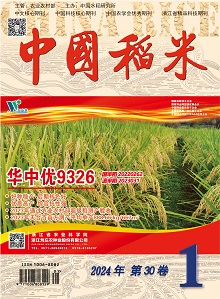A high-quality variety Yongyou1540, which is widely promoted in Hangjiahu Plain in production, was used to investigate the effects of different sowing dates [April 30 (Ⅰ), May 10 (Ⅱ) and May 20 (Ⅲ)] on rice quality, yield and its components. The results demonstrated that delayed sowing significantly increased the yield of Yongyou1540, with the peak yield occurring on sowing period II and III. The yield improvement was primarily attributed to enhancements in yield components, except for panicles per area. Furthermore, the processing, appearance, and steaming quality of Yongyou1540 showed varying degrees of improvement with delayed sowing, while nutritional and palatable qualities exhibited variability. Therefore, sowing Yongyou1540 around May 10 achieved a synergistic improvement in both yield and rice quality in the Hangjiahu Plain. Further analysis between climatic parameters and rice yield and grain qualities showed that the average daily sunshine hours, average daily temperature, maximum daily temperature and minimum daily temperature during the panicle development and grain filling stage were negatively correlated with the grains per panicle (R=-0.25-0.82, P<0.001) and appearance (R=-0.28-0.90, P<0.001) quality of Yongyou1540. Conversely, the diurnal temperature difference during the grain filling period exhibited a positive relationship with grain weight(R=0.6, P<0.001), alkali extinction value (R=0.5, P<0.001), gum consistency (R=0.87, P<0.001), and protein content(R=0.74, P<0.001), but a negative correlation with amylose content(R=-0.83, P<0.001). These results indicated that moderately alleviating the high temperature stress during the panicle intitation period and the grain filling period and increasing the diurnal temperature difference during the filling period were crucial in improving the grain appearance quality and the cooking and tasting quality, which was the keys for improving the rice quality by sowing optimization.

